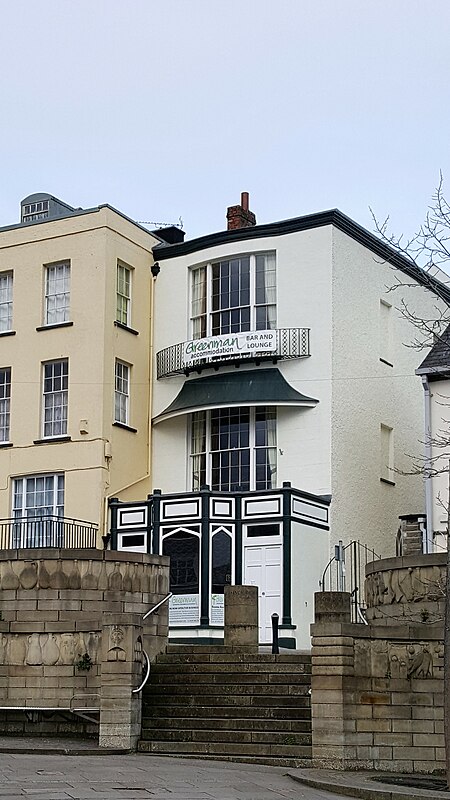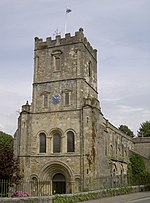Raglan Lodge
ChepstowGrade II* listed buildings in Monmouthshire

Raglan Lodge is a Grade II* listed building in Beaufort Square, Chepstow, Monmouthshire, Wales. Though the frontage dates from the early 19th century, parts of the building date from the medieval period and the ground floor vaulted hall was probably the town's 14th century moot hall. The building has been refurbished and is currently used as a backpackers' hostel.
Excerpt from the Wikipedia article Raglan Lodge (License: CC BY-SA 3.0, Authors, Images).Raglan Lodge
Hocker Hill Street,
Geographical coordinates (GPS) Address Nearby Places Show on map
Geographical coordinates (GPS)
| Latitude | Longitude |
|---|---|
| N 51.6423 ° | E -2.6753 ° |
Address
Hocker Hill Street 13
NP16 5EU , Chepstow
Wales, United Kingdom
Open on Google Maps









